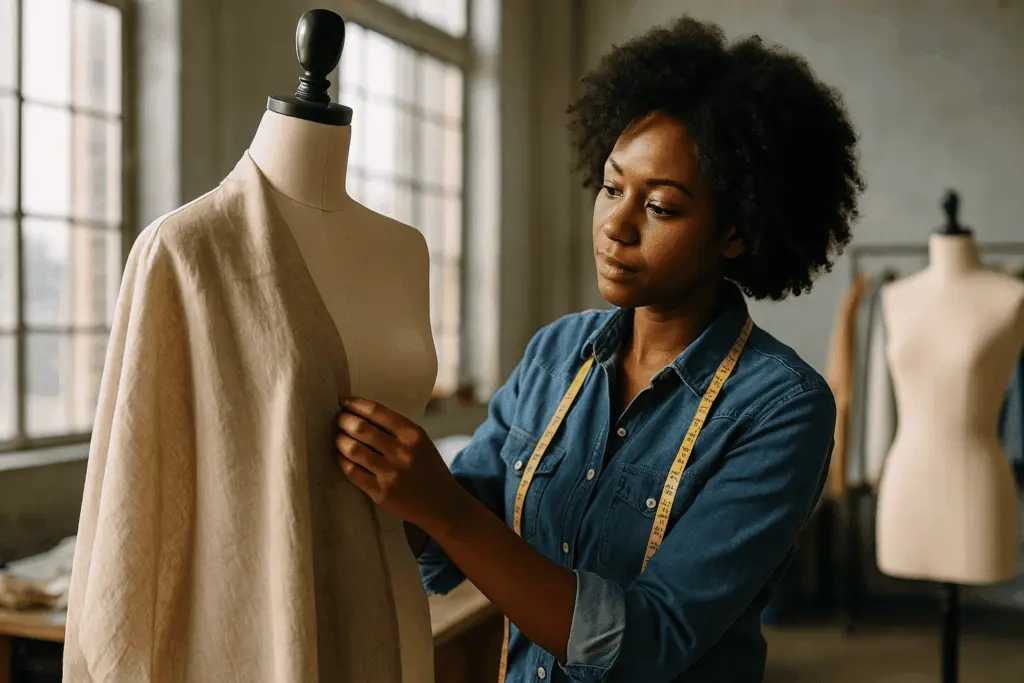
Introduction
Research and development fashion projects are now central to the global fashion industry. Fashion research goes far beyond choosing colors or fabrics. It integrates market research, trend forecasting, and consumer preferences to shape the clothing design process. The research and development clothing brand model shows how creativity, science, and technology merge. With thorough research and clear strategies, fashion companies create collections that respond to market demands, address sustainability concerns, and reduce waste. This approach secures growth in an industry where relevance and innovation are essential.
What Is Research and Development in Fashion?
Research and development in fashion is a structured method of exploring fabrics, styles, and production techniques. It combines creative inspiration with market research, data analytics, and consumer insights. Fashion R&D teams in apparel companies lead the development of collections by:
- Exploring new ideas for eco-friendly fabrics
- Conducting primary research through surveys and focus groups
- Gathering secondary sources to identify fashion trends and market demands
- Using digital tools, AI, and data driven insights to guide product development
This process ensures that brands evaluate costs, efficiency, and environmental impact while remaining aligned with industry standards. Without research, development becomes guesswork, leaving fashion companies vulnerable to shifting trends.
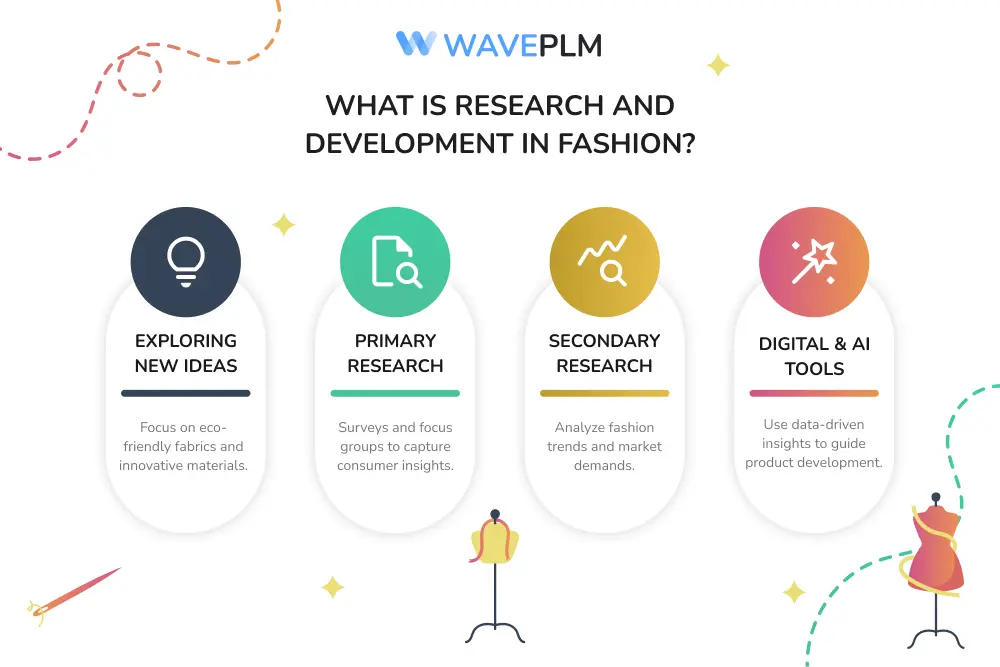
Role of Fashion Researchers
Fashion researchers act as bridges between creativity and consumer reality. They gather and analyze fashion research data using both primary research and secondary sources. Their responsibilities include:
- Conducting interviews, surveys, and focus groups
- Tracking current trends with data analytics
- Identifying consumer preferences across different markets
- Translating insights into actionable product development strategies
By integrating AI and advanced digital tools, fashion researchers enhance accuracy in trend forecasting. They evaluate patterns in consumer behavior and provide designers with data driven insights that guide new collections. This ensures that every initial idea aligns with the expectations of the target audience.
The Research and Development Clothing Brand Strategy
The research and development clothing brand strategy merges artistic creativity with scientific precision. Forward-thinking brands focus on:
- Testing sustainable fabrics with lower environmental impact
- Experimenting with innovative materials and patterns
- Enhancing clothing design processes through digital tools
- Collaborating with partners, suppliers, and students to refine collections
For example, some fashion companies explore biodegradable fabrics, while others test plant-based dyes. These innovative methods strengthen sustainability while reducing waste. The strategy results in collections that inspire consumers, remain relevant to current trends, and align with long-term industry goals.
Fashion R&D and the Product Development Process
Fashion R&D drives innovation across every stage of product development. From an initial idea to final production, the process blends research, creativity, and market insights.
|
Stage |
Action |
Tools & Methods |
Outcome |
|---|---|---|---|
|
Initial Idea |
Explore inspiration and creative themes |
Brainstorming, digital tools, personal experience |
Foundation for collection |
|
Market Research |
Evaluate market demands and fashion trends |
Surveys, focus groups, secondary sources |
Data driven insights |
|
Material Research |
Test fabrics, blends, and dyes |
Labs, sustainability testing |
Innovative fabrics |
|
Prototype Development |
Create patterns and styles |
3D design, PLM software |
Efficient evaluation |
|
Sustainability Testing |
Measure environmental impact |
Life-cycle analysis, carbon footprint tests |
Sustainable production |
|
Consumer Testing |
Collect consumer feedback |
Focus groups, interviews, market analysis |
Improved product designs |
|
Final Development |
Prepare for manufacturing |
PLM workflows, supplier coordination |
Market-ready collection |
This framework ensures that creativity is balanced with thorough research, consumer insights, and sustainability.
How PLM Software Supports Fashion R&D
PLM software plays an essential role in fashion research and development. It creates a single source of truth where teams can collaborate and evaluate data. Fashion companies using PLM systems gain advantages such as:
- Centralized product development data for fabrics, prototypes, and styles
- Clear integration of market research and consumer preferences
- Real-time sustainability tracking during development
- Streamlined collaboration across design, sourcing, and production teams
- Data analytics tools to evaluate product performance and relevance
This efficiency allows brands to transform initial ideas into finalized collections faster, reducing costs and minimizing errors. PLM software enhances creativity while ensuring that each step of development meets industry expectations.
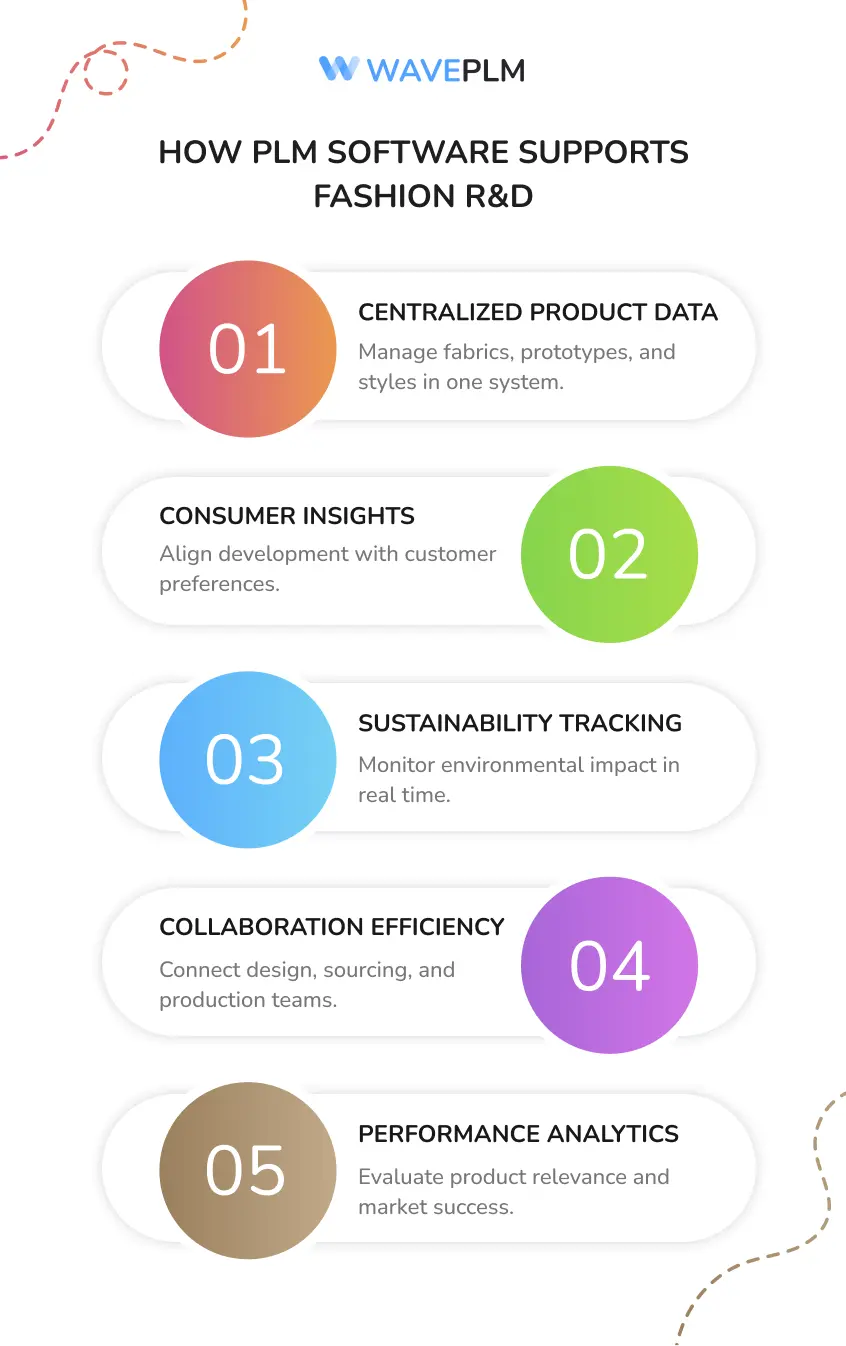
Example: From Initial Idea to Final Collection
Imagine a brand designing a commuter jacket for urban professionals. The initial idea is based on consumer surveys and market research that highlight a demand for lightweight, water-resistant outerwear. Fashion researchers collect feedback from focus groups and study current trends. The development team tests fabrics that combine breathability with durability, evaluating their environmental impact. Designers enhance creativity with digital tools to create efficient prototypes. PLM software stores every detail, from test results to final approvals, ensuring smooth collaboration. The final collection reaches consumers quickly, combining innovation, style, and sustainability.
Sustainability as a Core Element of Fashion R&D
Sustainability is essential for every modern brand. Fashion research highlights how eco-friendly strategies lead to stronger growth and brand loyalty. Key methods include:
- Using biodegradable fabrics
- Developing recyclable materials
- Testing plant-based dyes with reduced environmental impact
- Reducing waste by streamlining production and design
These methods not only enhance sustainability but also create a competitive advantage. Consumers want fashion companies that prioritize responsible development. By embedding sustainability in the research process, brands lead the industry toward long-term change.
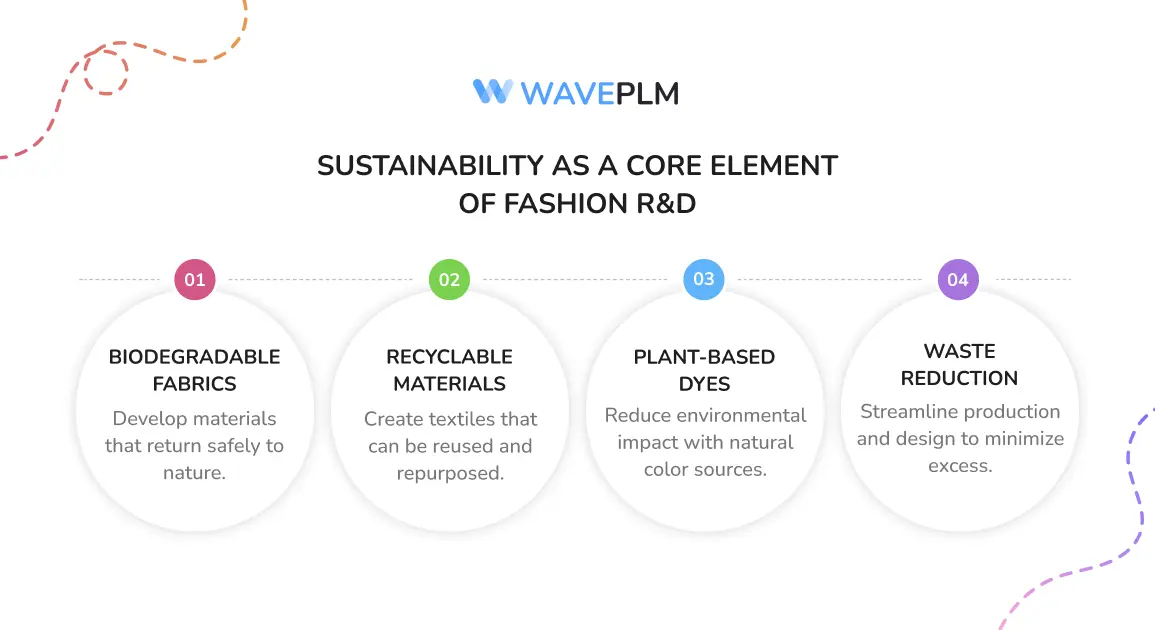
Fashion R&D Framework for Brands
Here is a detailed framework for brands seeking to integrate research into their product development strategies:
|
Step |
Action |
Example |
|
1 |
Conduct market research |
Use surveys, interviews, and focus groups |
|
2 |
Explore creative inspiration |
Draw on personal experience, art, and nature |
|
3 |
Test fabrics and materials |
Evaluate sustainability, costs, and efficiency |
|
4 |
Develop prototypes |
Leverage PLM systems and 3D design tools |
|
5 |
Gather consumer insights |
Apply trend forecasting and data analytics |
|
6 |
Evaluate environmental impact |
Test carbon footprint and energy use |
|
7 |
Finalize collection |
Align with current trends and production standards |
This extended framework balances creativity, efficiency, and sustainability while ensuring that collections remain relevant.
The Future of Fashion Research and Development
The future of research and development in fashion will expand as technology evolves. Digital tools, AI, and data analytics will redefine product development. Students and young designers will bring personal experience and new ideas to the industry, exploring creative methods and enhancing relevance. AI-powered trend forecasting will evaluate market demands and consumer behavior more efficiently. Digital twins will simulate garment performance before production, reducing waste and costs.
Collaboration between fashion designers, partners, and manufacturing units will grow stronger. Fashion companies that embrace these innovative techniques will lead the world in creating sustainable, efficient, and consumer-driven collections.
Conclusion
Research and development in fashion is not optional — it is essential. Fashion research, market research, and product development ensure that collections align with consumer preferences and current trends. The research and development clothing brand strategy shows how creativity, thorough research, and innovation merge into collections that inspire and last. With PLM software, fashion companies centralize development, enhance efficiency, and reduce environmental impact.
Fashion R&D secures a future where every idea—from the initial spark of inspiration to a finished collection—reflects sustainability, creativity, and growth in the modern fashion industry.

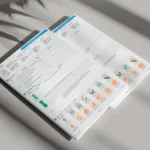
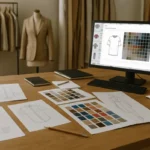
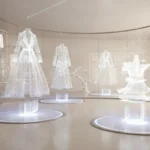

Leave a Reply